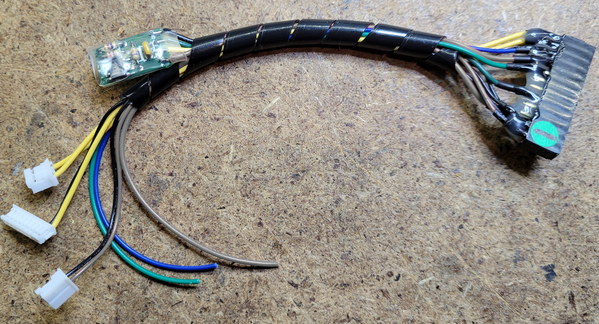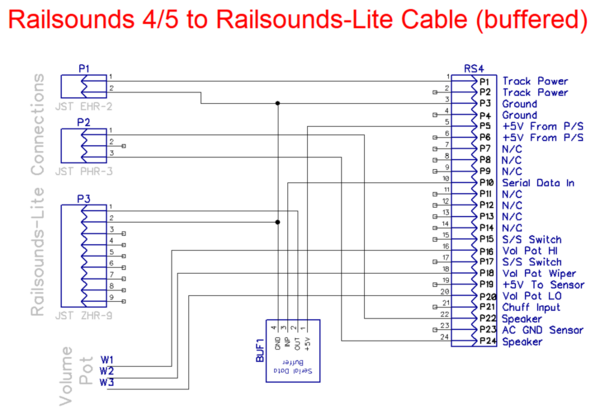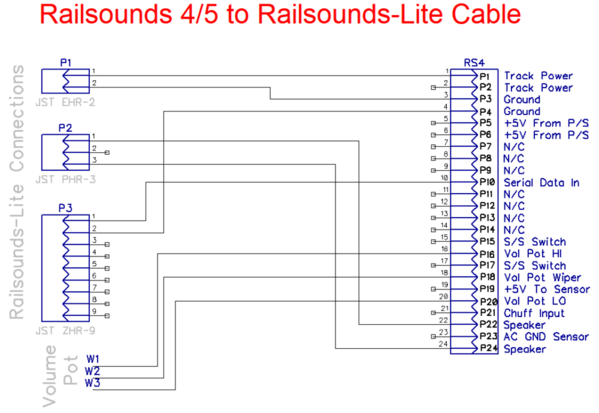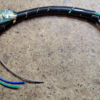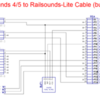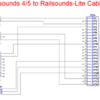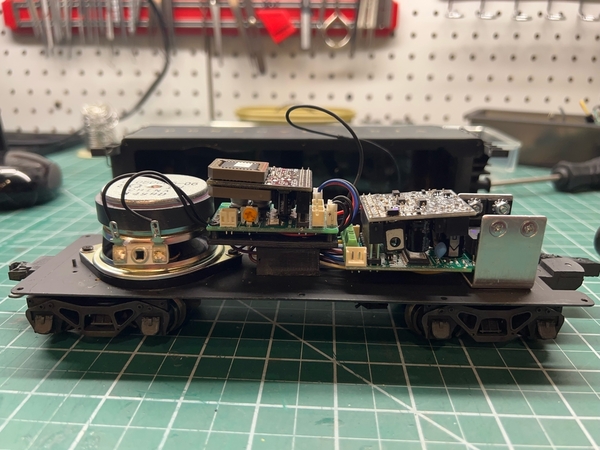With all the discussion of TMCC and early Legacy parts disappearing from the Lionel parts site, it seems like a good time to consider how to replace the Lionel Railsounds 4/5 boards with the ERR Railsounds Commander (Railsounds-Lite) board. I created a cable to do the job without modifying the existing installation, it's a plug-n-play affair.
I also noticed that the ERR Railsounds Commander (Railsounds-Lite) board imposes a greater load on the serial data than the existing Railsounds 4/5 boards, that sometimes causes issues with other devices that use the serial data. That being the case, I also created a buffered version of the cable to address that potential problem.
Here's a finished example of the buffered cable, it has my serial data buffer added to address any serial data attenuation issues. This would primarily be an issue if you don't have a wireless IR link to the tender in a steam installation, and also any diesel installation. Note with the buffered cable, you leave the existing Railsounds Generic Power Supply in place to provide the +5V required for the serial port buffer.
Wiring is also provided in the conversion cables to use the existing volume control, this is accomplished by removing the volume control on the Railsounds-Lite board and soldering those three leads in it's place. You can then utilize the existing volume control instead of the on-board pot on the Railsounds-Lite board.
Below is the replacement cable graphic as well as schematics of the buffered and unbuffered cable.
Note that the RS4 connector is depicted here, however the connections used are common to Railsounds 4 and Railsounds 5 boards.




